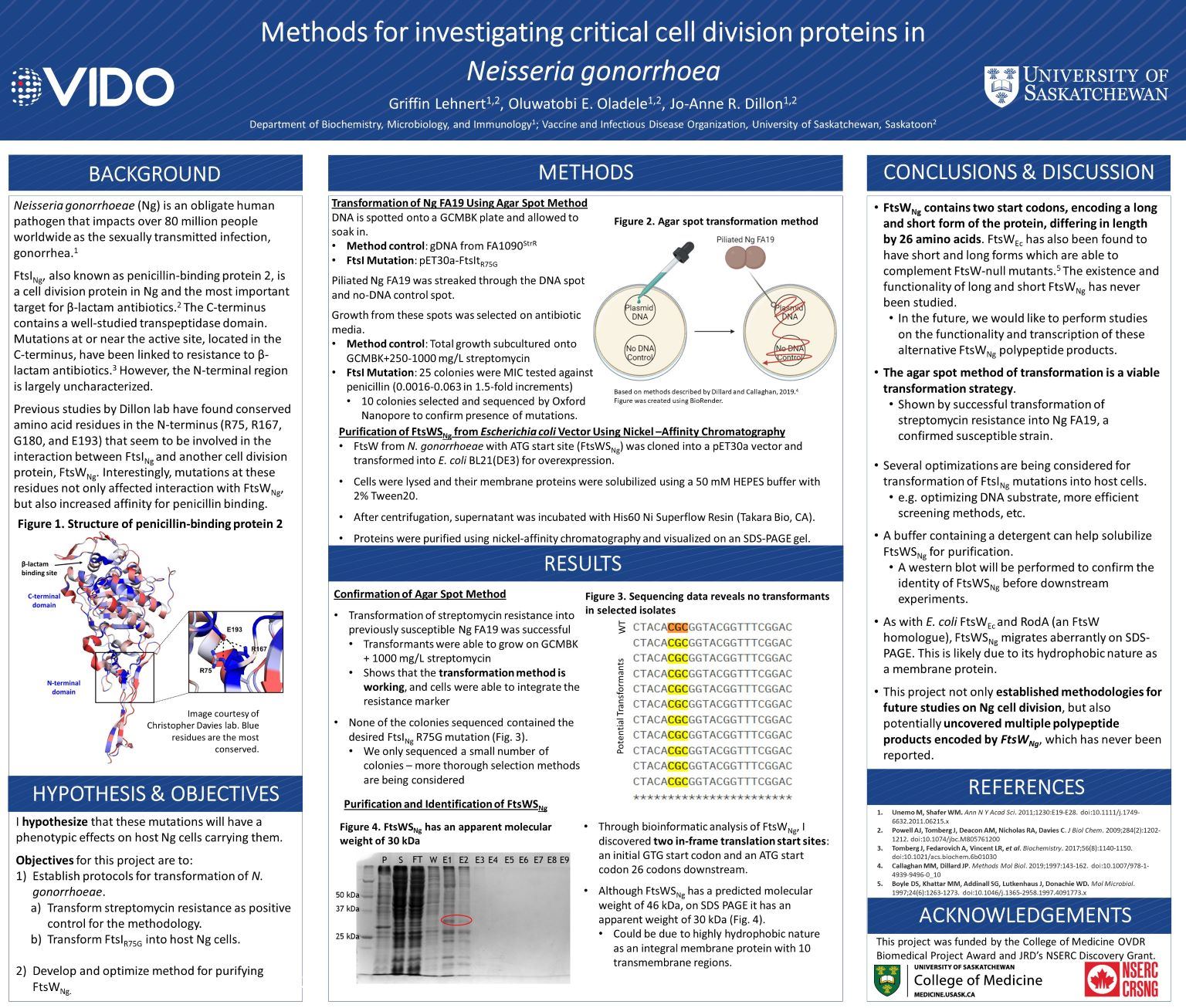
Methods for Investigating Critical Cell Division Proteins in Neisseria gonorrhoeae
Griffin Lehnert
FtsI is a critical cell division protein in Neisseria gonorrhoeae (Ng) and the primary target of β-lactam antibiotics. Previous studies in the Dillon laboratory found four conserved amino acid residues in the uncharacterized N-terminus of FtsI. Single substitution mutations at these residues not only disrupt the interaction between cell division proteins FtsI and FtsW, but also alter FtsI’s affinity for penicillin.
The objectives for this project were to develop methodologies to: 1) transform host Ng cells with FtsI mutations and 2) overexpress and purify FtsW by nickel-affinity chromatography.
The agar spot transformation method was validated by transforming a streptomycin susceptible Ng isolate with Ng DNA containing streptomycin resistance markers. As a result, transformants gained high streptomycin resistance. In testing multiple protocols, I have begun optimizing the isolation and purification of FtsW. Interestingly, through bioinformatic analysis of FtsW, two potential transcription start sites were identified. While long and short transcripts been observed in Escherichia coli FtsW, these dual start sites have never been described in Ng. Further investigations into their functionality and transcription in vivo are still required.
This project not only established protocols for future Ng cell division studies, but also elucidated previously undescribed start sites in FtsWNg.
